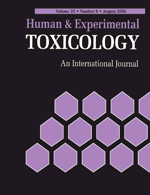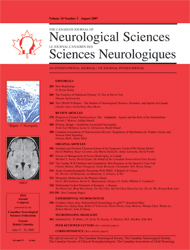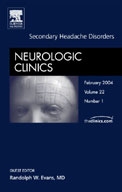|

Eur J Med. 2003 Sep. :
(3) : 241-3
Electrocerebral silence with preserved but
reduced cortical brain perfusion.
CASE REPORTS
European Journal of
Emergency Medicine. 10(3):241-243, September 2003.
Heckmann, Josef G.; Lang, Christoph J.G.; Pfau, Matthias;
Neundorfer, Bernhard
Abstract:
Isoelectric electroencephalogram in conformance with
clinical findings is strongly suggestive of brain death. In
clinical practice, isoelectric electroencephalogram in
not-brain-dead patients is rarely seen. We report on a
53-year-old patient who suffered ischaemic encephalopathy
after cardiopulmonary arrest. He had residual brainstem
function with sufficient spontaneous breathing and evidence
of cerebral blood flow on single photon emission computed
tomography scan, but his electroencephalogram was
isoelectric. He survived this condition for more than 7
weeks. This case
demonstrates that isoelectric electroencephalogram can not
be equated with brain death,
and that in prognostic assessment
both clinical findings and supportive technical methods are
mandatory.
__________________________________________________________
Human & Experimental Toxicology

Difficulties in assessing brain death in a
case of benzodiazepine poisoning with persistent cerebral
blood flow
Frédéric
Marrache
Réanimation
polyvalente, Hôpital Delafontaine, Saint Denis, France
Bruno Megarbane
Réanimation
Médicale et Toxicologique, Hôpital Lariboisière, Université
Paris VII-INSERM U26, Paris, France; Réanimation Médicale et
Toxicologique, Hôpital Lariboisière, 2 Rue Ambroise Paré,
75010 Paris, France
bruno-megarbane@wanadoo.fr
Stéphane Pirnay
Laboratoire de
Toxicologie de la Préfecture de Police de Paris, Paris,
France
Abdel Rhaoui
Marie Thuong
Réanimation
polyvalente, Hôpital Delafontaine, Saint Denis, France
Assessing brain
death may sometimes be difficult, with isoelectric
EEG following psychotrope overdoses or
normal
cerebral blood flow (CBF) persisting
despite brain death in the case of ventricular drainage or
craniotomy.
A 42-year-old man, resuscitated after cardiac
arrest following a suicidal ingestion of ethanol,
bromazepam and zopiclone, was admitted in deep coma. On
day 4, his brainstem reflexes and EEG activity
disappeared. On day 5, his serum bromazepam
concentration was 817 ng/ml (therapeutic: 80-150). The
patient was unresponsive to 1 mg of flumazenil.
MRI showed diffuse cerebral swelling. CBF
assessed by angiography and Doppler remained
normal and EEG isoelectric until he died on day 8
with multiorgan failure.
There was a
discrepancy between the clinically and EEG-assessed
brain death, and CBF persistence. We
hypothesized
that brain death, resulting from diffuse anoxic
injury, may lead, in the absence of major intracranial
hypertension, to angiographic misdiagnoses.
Therefore, EEG remains useful to assess diagnosis
in such unusual cases.
__________________________________________________________
The Canadian Journal of neurological Science

Can J Neurol Sci.2003
Nov,30(4):305-6
Simulation of Brain Death from Fulminant De-efferentation
Yael Friedman
A2, Liesly Lee A2, John R. Wherrett
A2, Peter Ashby A2, Stirling Carpenter
A2
A2 Division
of Neurology, University of Toronto, Toronto, Ontario
Canada.
Abstract:
Background: Guillain-BarrÈ syndrome (GBS) classically
presents with a subacutely evolving areflexic paralysis,
with typical laboratory findings of elevated cerebrospinal
fluid protein and abnormal nerve conduction studies. There
is now an increasing recognition of GBS variants that differ
in clinical presentation, prognosis, electrophysiology and
presumed pathogenesis. Fulminant cases of GBS have been
reported in which a rapid deterioration evolves to a
clinical state resembling ìbrain deathî. Methods: A
retrospective analysis of two such cases of fulminant
neuropathy are described, that includes the clinical course,
electrophysiology and neuropathology where available.
Results: We describe two patients that presented with a
rapid course of neurological deterioration, lapsing into
what resembled a ìclinically brain-deadî state that was
subsequently ascribed to a fulminant polyneuropathy.
Investigations (electrophysiological, pathological) and the
clinical course suggested an axonal neuropathy. Conclusions:
A fulminant neuropathy can result in a clinical state
resembling ìbrain deathî through diffuse de-efferentation.
Although generally attributed to aggressive demyelination
with secondary axonal degeneration, a primary axonopathy can
also lead to a similar clinical presentation.
__________________________________________________________

Ned Tijdschr Geneeskd. 2001 Dec 29;145(52):2513-6
Totally
paralyzed or brain dead?
[Article in Dutch]
van Dijk GW,
Vos PE,
Eurelings M,
Jansen GH,
van Gijn J.
Universitair Medisch Centrum
Utrecht, Postbus 85.500, 3508 GA Utrecht. g.w.dijk@neuro.azu.nl
In two patients, men aged 23 and 42 years, a condition that
mimicked brain death was observed as a consequence of
rapidly
progressive complete peripheral paralyses, which
included the intrinsic and extrinsic eye muscles. However,
the EEG revealed a waking pattern. Maximal supportive
therapy was provided, which included haemodialysis for
the first patient and artificial ventilation for both
patients. A slow recovery was seen after four weeks. The
first patient was paralyzed following the ingestion of a
large quantity of ethylene glycol and the second by botulism
due to the consumption of injudiciously canned food.
In patients with catastrophic brain injury, the diagnosis of
brain death can be confirmed by a clinical neurological
examination. In considering the diagnosis 'brain death', the
most important criterion is that the cause of the brain
damage is established. If the cause is insufficiently, the
presence of brain death should be seriously doubted, unless
an isoelectric EEG is observed.
__________________________________________________________


Neurol Clin.1999 May;17(2):295.
Brain death.
Beresford HR.
Cornell Law School, Ithaca, New York 14853-4901, USA.
bersford@law.mail.cornell.edu
Current law in the United States authorizes physicians to
diagnose brain death by applying generally accepted
neurologic criteria for determining loss of function of the
entire brain. This article offers a medical-legal
perspective on
problems that may arise with respect to the determination of
brain death. These include the possibility of diagnostic
error,
conceptual disagreements that may constrain the use of
neurologic criteria to diagnose death, and the conflation of
brain death and loss of consciousness. This article also
addresses legal aspects of the debate over whether to expand
the definition of brain death to include permanent
unconsciousness. Although existing laws draw a clear
distinction between brain death and the persistent
vegetative state, many courts have authorized removal of
life support from individuals whose unconsciousness is
believed to be permanent on proof that removal accords with
preferences expressed before sentience was lost.

__________________________________________________________
(Ref PM7)
|